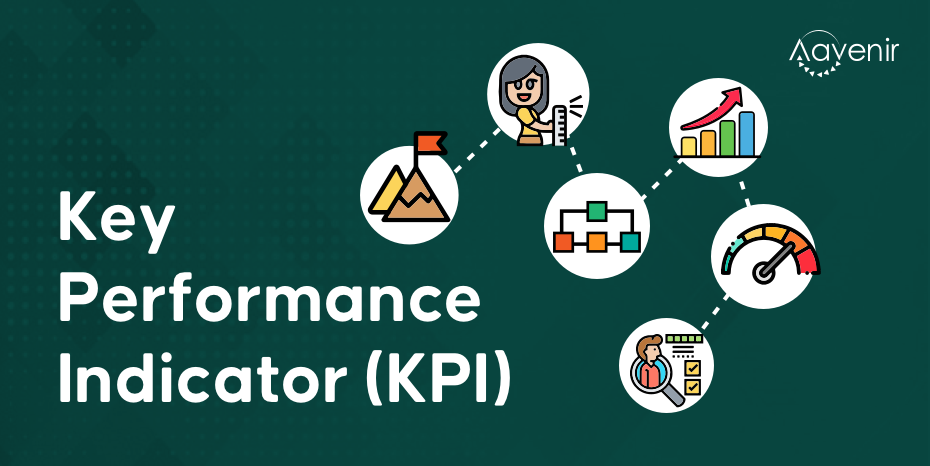What is a Key Performance Indicator (KPI)?- Definition
Key Performance Indicators (KPIs) are the critical (key) indicators of progress toward an intended result. KPIs provide a focus for strategic and operational improvement, create an analytical basis for decision making, and help focus attention on what matters most. As Peter Drucker famously said, “What gets measured gets done.”

Understanding Key Performance Indicator (KPI)
A Key Performance Indicator is a measurable value that demonstrates how effectively a company achieves key business objectives. Organizations use KPIs at multiple levels to evaluate their success at reaching targets. High-level KPIs may focus on the business’s overall performance, while low-level KPIs may focus on processes in departments such as sales, marketing, HR, support, and others.
Too often, organizations blindly adopt industry-recognized KPIs and then wonder why KPI doesn’t reflect their own business and fails to affect any positive change. One of the most critical but often overlooked aspects of KPIs is that they are a form of communication. As such, they abide by the same rules and best practices as any other form of communication. Concise, clear, and relevant information is much more likely to be absorbed and acted upon.
In terms of developing a strategy for formulating KPIs, your team should start with the basics and understand the organizational objectives you plan to achieve, and who can act on this information. This should be an iterative process that involves feedback from analysts, department heads, and managers. As this fact-finding mission unfolds, you will better understand which business processes need to be measured with a KPI dashboard and with whom that information should be shared.
Creating KPIs in 5 Simple Steps
Developing meaningful KPIs that track and visualize performance takes some planning. Each KPI needs to address a specific business objective and provide timely, accurate information to assess progress towards goals.
Essentially, creating successful KPIs comes down to understanding the aspirations of the business using a transparent, structured process for crafting KPIs.
Here’s how to create a KPI:
- Establish a clear objective
If a goal of the business is to be the ‘market leader,’ then a KPI objective may be to ‘increase revenue by 10% this financial year’ or ‘Expand our product lines to 20’. State clearly, and in simple terms, the purpose of the KPI. This guides anyone viewing the KPI to interpret the data in the correct context.
- Outline the criteria for success
What will the target be? Is it attainable? When should it be accomplished? And how will progress be monitored? Targets should be realistic; changes to business processes take time to implement. In the initial stages of KPI monitoring, it’s best to focus on long-term targets with midterm monitoring.
- Collect the data
Investigate the availability and accuracy of the data. Data may be available automatically from existing systems or hidden in reports and databases. This data will all need to be pulled together at regular intervals for reporting in one central place.
- Build the KPI formula
Some KPIs contain but a single metric or measure. However, most rely on a combination brought together under a single calculated formula. For example, a KPI that measures productivity in revenue by machine would look like this: Total Revenue divided by the total number of devices. Build formulas and create calculations with test data to see if the results are what you would expect.
- Present your KPIs
To efficiently communicate your KPIs, you’ll need to translate the data into understandable visuals such as graphs and charts. Dashboards for Operational KPIs or Reports for Strategic KPIs offer a convenient way to create, track and distribute your KPIs.
Significance of SMART KPI
One way to evaluate the relevance of a performance indicator is to use the SMART criteria. The letters are typically taken to stand for Specific, Measurable, Attainable, Relevant, Time-bound. In other words:
- Is your objective Specific?
- Can you Measure progress towards that goal?
- Is the goal realistically Attainable?
- How Relevant is the goal to your organization?
- What is the Time-frame for achieving this goal?
Limitations of Using Key Performance Indicators (KPIs)
Some of the disadvantages to using KPIs include:
- The long time frame required for KPIs to provide meaningful data
- They require constant monitoring and close follow up to be useful
- They open up the possibility for managers to “game” KPIs
- Quality tends to drop when managers are hyperfocused on productivity KPIs
- Employees can be pushed too hard, aiming specifically for KPIs

